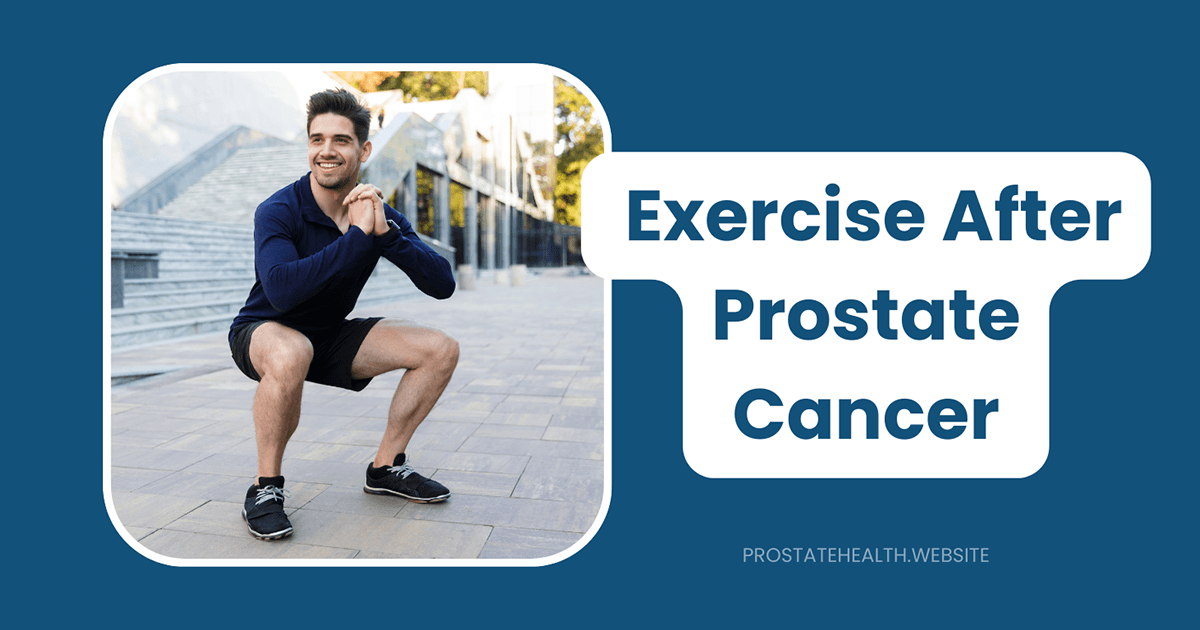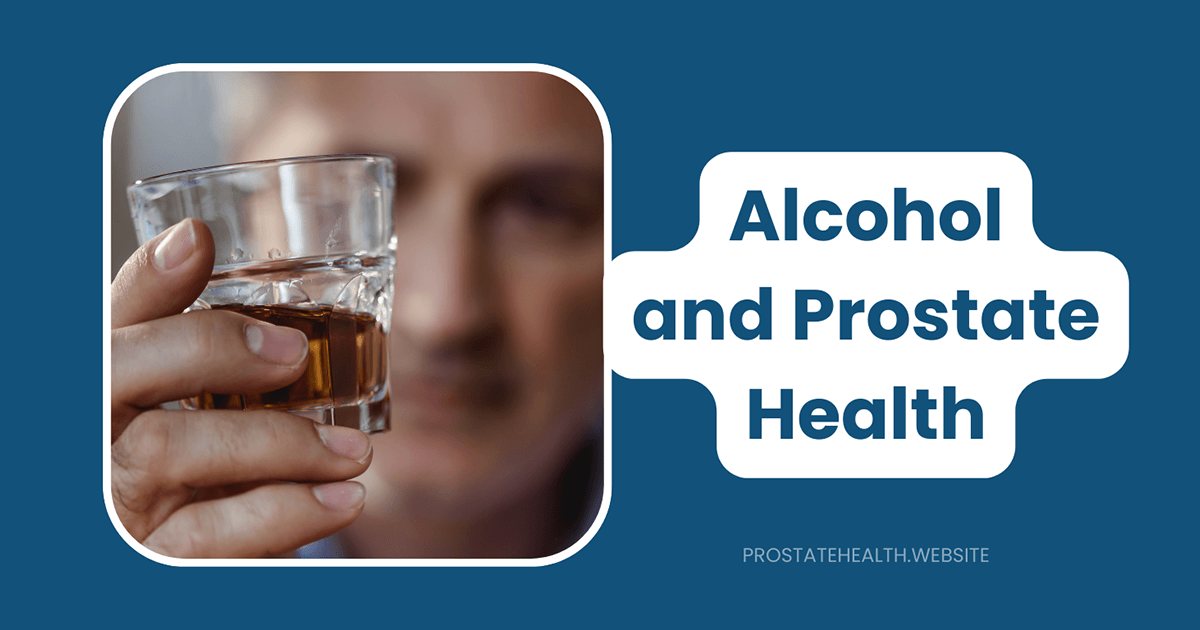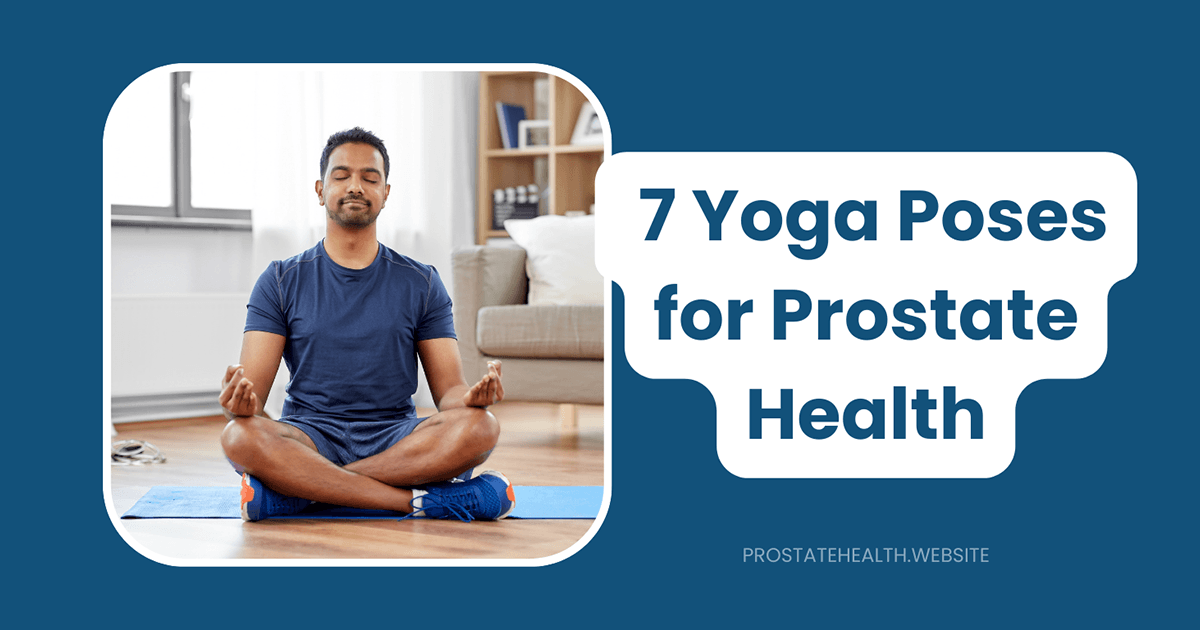Exercise After Prostate Cancer: Safe and Effective Approaches

When Robert, a 65-year-old retired engineer, completed his prostate cancer treatment, he faced a new challenge: rebuilding his strength and confidence. “I knew exercise was important,” he told me, “but I wasn’t sure what was safe or where to begin. I worried about incontinence during workouts and whether certain movements might cause problems.”
Robert’s concerns are common among the millions of men recovering from prostate cancer treatment. Whether you’ve undergone surgery, radiation, hormone therapy, or a combination of treatments, exercise plays a crucial role in your recovery and long-term health. Yet many men hesitate, unsure of what’s appropriate or safe given their unique circumstances.
The good news? Research consistently shows that exercise is not only safe after prostate cancer treatment but can significantly improve your quality of life, manage treatment side effects, and potentially reduce the risk of cancer recurrence. This comprehensive guide explores evidence-based approaches to exercise after prostate cancer, helping you create a safe, effective routine tailored to your recovery journey.
The Science: Why Exercise Matters After Prostate Cancer
Before diving into specific exercises, let’s understand why physical activity is so important after prostate cancer treatment.
Physical Benefits
Research has demonstrated numerous physical benefits of regular exercise for prostate cancer survivors:
- Reduced fatigue: A common side effect of cancer treatment, fatigue can be significantly improved through regular physical activity. A 2025 review found that exercise reduced cancer-related fatigue by up to 35%.
- Improved physical function: Treatment can decrease muscle mass and strength. Exercise helps rebuild both, improving your ability to perform daily activities.
- Better management of body composition: Hormone therapy often leads to increased fat mass and decreased muscle mass. Exercise, particularly resistance training, can help counteract these changes.
- Enhanced bone health: Androgen deprivation therapy (ADT) can reduce bone density, increasing fracture risk. Weight-bearing exercise helps maintain bone strength.
- Improved continence: Pelvic floor exercises can significantly reduce urinary incontinence after prostatectomy, with studies showing up to 74% continence rates at 3 months post-surgery with consistent training.
- Better sexual function: Research published in JAMA Network Open found that men who participated in supervised exercise programs reported greater improvements in sexual desire and erectile function compared to those receiving usual care.
Psychological Benefits
Exercise also offers substantial mental and emotional benefits:
- Reduced anxiety and depression: Physical activity stimulates the release of endorphins, improving mood and reducing psychological distress.
- Enhanced self-esteem: Regaining physical capabilities can boost confidence and body image, which may be affected by treatment.
- Improved sleep quality: Regular exercise can help regulate sleep patterns, which are often disrupted during and after cancer treatment.
- Greater sense of control: Taking an active role in your recovery through exercise can provide a sense of empowerment during a time when many men feel a loss of control.
Potential Impact on Cancer Outcomes
Emerging research suggests exercise may influence cancer outcomes:
- Men who exercise the equivalent of 3+ hours of vigorous activity weekly have shown a 61% lower risk of prostate cancer death
- The ERASE trial found that high-intensity interval training improved cardiopulmonary fitness and was associated with decreased PSA levels in men with localized prostate cancer
- Regular physical activity may help reduce inflammation and improve immune function, potentially creating a less favorable environment for cancer cells
Dr. Sarah Johnson, oncologist at Memorial Cancer Center, explains: “We now view exercise as a form of medicine for cancer patients. The evidence is compelling enough that we should be prescribing physical activity alongside other treatments, tailored to each patient’s capabilities and needs.”
Exercise Guidelines: How Much and What Type?
Current exercise guidelines for prostate cancer survivors align with those from the American Cancer Society and the American College of Sports Medicine:
Aerobic Exercise
- Frequency: 3-5 days per week
- Duration: 150-300 minutes of moderate-intensity OR 75-150 minutes of vigorous-intensity activity weekly
- Intensity: Moderate (able to talk but not sing) to vigorous (able to say only a few words without pausing for breath)
Resistance Training
- Frequency: 2-3 days per week (non-consecutive days)
- Sets/Repetitions: 2-3 sets of 8-12 repetitions per exercise
- Focus: Major muscle groups (legs, chest, back, shoulders, arms, core)
Flexibility Exercises
- Frequency: 2-3 days per week (ideally daily)
- Duration: Hold each stretch for 30-60 seconds
- Focus: Major muscle-tendon groups
Balance Exercises
- Frequency: 2-3 days per week
- Duration: 10-15 minutes per session
- Focus: Static and dynamic balance activities
Pelvic Floor Exercises
- Frequency: 3 times daily
- Sets/Repetitions: 3 sets of 10 repetitions (both quick and sustained contractions)
- Focus: Pelvic floor muscle strengthening
Dr. Michael Chen, exercise physiologist specializing in cancer rehabilitation, notes: “The key is starting where you are, not where you think you should be. Even small amounts of activity provide benefits, and you can gradually increase duration and intensity as your fitness improves.”
Types of Exercise for Prostate Cancer Recovery
Let’s explore specific types of exercise particularly beneficial after prostate cancer treatment:
1. Pelvic Floor Exercises (Kegels)
Perhaps the most important exercise for men recovering from prostatectomy, pelvic floor exercises help restore urinary control and may improve sexual function.
How to perform:
- Identify your pelvic floor muscles (the ones you use to stop urination midstream)
- Tighten these muscles and hold for 5 seconds (avoid tensing abdominal, buttock, or thigh muscles)
- Release and relax for 5 seconds
- Repeat 10 times for one set
- Perform 3 sets daily
Advanced technique:
- Gradually increase hold time to 10 seconds
- Add “quick flicks” (rapid contract-release) to build different muscle fibers
- Incorporate into functional movements like standing from sitting
When to start: Ideally 4-6 weeks before surgery if possible. After surgery, begin as soon as your catheter is removed, with your doctor’s approval.
Expert tip: “Many men perform Kegels incorrectly, either by bearing down instead of lifting up, or by using the wrong muscles,” says Dr. Jennifer Williams, pelvic floor physical therapist. “Consider one or two sessions with a specialized physical therapist to ensure proper technique.”
2. Walking and Other Aerobic Activities
Walking is often the first activity recommended after prostate cancer treatment due to its accessibility and adjustable intensity.
Benefits:
- Improves cardiovascular fitness
- Helps manage weight
- Reduces fatigue
- Enhances mood
- Can be social when done with others
How to start:
- Begin with 5-10 minutes at a comfortable pace
- Gradually increase duration by 5 minutes each week
- Aim for eventually reaching 30 minutes most days
- Consider tracking steps with a pedometer or smartphone
Other aerobic options:
- Swimming (excellent low-impact option)
- Cycling (stationary bikes may be more comfortable initially)
- Elliptical training
- Rowing (if no restrictions on movement)
When to start: Light walking can often begin within days of returning home after surgery, with your doctor’s approval. Start with short distances around your home and gradually increase.
3. Resistance Training
Strength training is particularly important for counteracting muscle loss associated with hormone therapy and aging.
Benefits:
- Preserves and builds muscle mass
- Strengthens bones
- Improves functional capacity
- Enhances metabolism
How to start:
- Begin with bodyweight exercises or light resistance
- Focus on proper form rather than weight/resistance
- Start with 1 set of 10-12 repetitions
- Progress to 2-3 sets as strength improves
- Gradually increase resistance when current level feels manageable
Key exercises:
- Chair squats (progressing to regular squats)
- Wall push-ups (progressing to modified, then standard push-ups)
- Seated rows with resistance bands
- Bridge exercises for core and glutes
- Standing heel raises
- Modified planks
When to start: Generally 6-8 weeks after surgery, with your doctor’s approval. Those undergoing radiation or hormone therapy may begin sooner with medical clearance.
Safety note: “Avoid heavy lifting (anything over 10 pounds) for at least 6 weeks after prostatectomy,” advises Dr. Robert Thompson, urologic oncologist. “This reduces the risk of hernia or other complications at the surgical site.”
4. Flexibility and Mobility Exercises
Stretching helps maintain range of motion and may reduce treatment-related stiffness.
Benefits:
- Maintains joint mobility
- Reduces muscle tension
- May improve posture
- Can help with relaxation
Key stretches:
- Gentle hamstring stretches
- Chest and shoulder stretches
- Hip flexor stretches
- Gentle spinal twists
- Calf stretches
When to start: Light stretching can begin within 2-3 weeks of surgery, avoiding any movements that cause pain or put pressure on the surgical area.
5. Balance Training
Balance exercises are particularly important for men on hormone therapy, which can increase fall risk due to muscle and bone density changes.
Benefits:
- Reduces fall risk
- Improves functional stability
- Enhances confidence in movement
Simple balance exercises:
- Standing heel-to-toe
- Single-leg stands (using support as needed)
- Slow clock reaches (extending leg in different directions)
- Tai Chi movements
- Yoga poses with stable support
When to start: Basic balance exercises can begin once you’re comfortable walking independently, typically 3-4 weeks after surgery.
Special Considerations for Common Side Effects
Different prostate cancer treatments come with specific side effects that may influence your exercise approach:
Exercising with Urinary Incontinence
Many men experience some degree of urinary incontinence after prostatectomy, which can make exercising feel intimidating.
Strategies:
- Timing: Exercise shortly after emptying your bladder
- Protection: Use incontinence pads during workouts if needed
- Hydration: Don’t reduce fluid intake; instead, plan exercise around your hydration schedule
- Intensity: Start with lower-impact activities and gradually increase intensity
- Pelvic floor engagement: Practice activating pelvic floor muscles before movements that typically cause leakage (like lifting or jumping)
Robert, whom we met earlier, shares: “I was terrified of having an accident during my walking group. My physical therapist suggested I empty my bladder before walking, wear a pad for confidence, and practice engaging my pelvic floor before each step. Within two months, I rarely had leakage during exercise.”
Exercising with Erectile Dysfunction
Exercise itself can improve erectile function through better cardiovascular health and pelvic blood flow.
Approaches:
- Pelvic floor exercises: May improve erectile function by enhancing blood flow
- Cardiovascular exercise: Improves overall vascular health, which is essential for erections
- Resistance training: May help boost testosterone levels naturally
- Reduce sedentary time: Even short movement breaks can improve vascular function
Exercising During/After Hormone Therapy
Androgen deprivation therapy (ADT) presents unique challenges, including reduced muscle mass, increased fat mass, and decreased bone density.
Strategies:
- Prioritize resistance training: Essential for preserving muscle mass
- Include weight-bearing exercise: Crucial for bone health
- Monitor intensity: Fatigue may be more pronounced
- Consider supervised exercise: Especially when beginning, to ensure proper form and appropriate progression
Exercising After Radiation Therapy
Radiation can cause fatigue and sometimes local skin irritation.
Approaches:
- Respect fatigue levels: Start with shorter sessions and build gradually
- Avoid chlorinated pools: If experiencing skin irritation in the treatment area
- Choose comfortable clothing: To avoid friction on sensitive skin
- Stay hydrated: Radiation can sometimes cause dehydration
Creating Your Exercise Plan: A Step-by-Step Approach
Step 1: Get Medical Clearance
Before beginning any exercise program:
- Consult with your oncologist and/or urologist
- Discuss any restrictions specific to your treatment
- Consider a referral to physical therapy, particularly for pelvic floor rehabilitation
- Address any other health conditions that might affect exercise safety
Step 2: Assess Your Starting Point
Be honest about your current fitness level:
- What was your activity level before diagnosis?
- What activities do you enjoy?
- What limitations are you currently experiencing?
- Do you have access to exercise equipment or facilities?
Step 3: Start Small and Progress Gradually
A sample progression for someone starting from a low activity level:
Weeks 1-2:
- Daily pelvic floor exercises: 3 sets of 10 repetitions
- Walking: 5-10 minutes, 3-4 days/week
- Gentle stretching: 5-10 minutes daily
Weeks 3-4:
- Continue pelvic floor exercises
- Walking: 15 minutes, 4-5 days/week
- Add basic balance exercises: 5 minutes, 2-3 days/week
- Continue stretching
Weeks 5-8:
- Continue pelvic floor exercises
- Walking: 20-25 minutes, 5 days/week
- Begin light resistance exercises: 1 set of 10-12 reps, 2 days/week
- Continue balance and flexibility work
Weeks 9-12:
- Continue pelvic floor exercises
- Walking: 30 minutes, 5 days/week
- Resistance training: 2 sets of 10-12 reps, 2-3 days/week
- Increase balance challenge: single-leg stands, 2-3 days/week
Step 4: Monitor and Adjust
Keep track of:
- How you feel during and after exercise
- Any pain or discomfort (distinguish between normal muscle fatigue and potential problems)
- Improvements in energy, strength, and function
- Changes in treatment side effects
Step 5: Consider Professional Guidance
Working with professionals can enhance safety and results:
- Physical therapist: Especially one specializing in oncology or men’s health
- Certified cancer exercise specialist: Trained specifically in cancer rehabilitation
- Personal trainer: Look for certifications in cancer exercise
Sample Weekly Exercise Plan
Here’s a balanced weekly plan for a man who is 3+ months post-treatment and has medical clearance for comprehensive exercise:
Monday
- Morning: Pelvic floor exercises (3 sets of 10)
- Afternoon: 30-minute walk at moderate pace
- Evening: 10 minutes of stretching
Tuesday
- Morning: Pelvic floor exercises (3 sets of 10)
- Afternoon: Resistance training (30 minutes)
- Chair squats: 2 sets of 10
- Wall push-ups: 2 sets of 10
- Seated rows with band: 2 sets of 10
- Bridges: 2 sets of 10
- Standing heel raises: 2 sets of 10
- Evening: Balance exercises (10 minutes)
Wednesday
- Morning: Pelvic floor exercises (3 sets of 10)
- Afternoon: 30-minute walk or swim
- Evening: 10 minutes of stretching
Thursday
- Morning: Pelvic floor exercises (3 sets of 10)
- Afternoon: Resistance training (repeat Tuesday’s routine)
- Evening: Balance exercises (10 minutes)
Friday
- Morning: Pelvic floor exercises (3 sets of 10)
- Afternoon: 30-minute walk at moderate pace
- Evening: 10 minutes of stretching
Saturday
- Morning: Pelvic floor exercises (3 sets of 10)
- Afternoon: Longer aerobic session (45 minutes) – walking, cycling, or swimming
- Evening: 15 minutes of comprehensive stretching
Sunday
- Morning: Pelvic floor exercises (3 sets of 10)
- Afternoon: Light activity of choice (gardening, golf, leisurely walk)
- Evening: 10 minutes of gentle yoga or stretching
Safety Considerations and Red Flags
While exercise is generally safe after prostate cancer treatment, be aware of these warning signs:
When to Stop Exercising and Consult Your Doctor
- Unusual pain or discomfort in the surgical area
- Blood in urine
- Significant increase in incontinence
- Dizziness or lightheadedness
- Unusual shortness of breath
- Chest pain
- Extreme fatigue that doesn’t improve with rest
General Safety Tips
- Stay hydrated: Drink water before, during, and after exercise
- Warm up and cool down: 5-10 minutes each
- Listen to your body: Distinguish between productive discomfort and potential injury
- Progress gradually: Increase duration before intensity
- Rest appropriately: Include recovery days, especially for resistance training
Real Success Stories: Finding Motivation
James, 70, underwent radical prostatectomy followed by radiation: “I was an active person before cancer, but treatment knocked me back significantly. I started with just walking to the mailbox and back. Six months later, I completed a 5K walk. Now, two years post-treatment, I’m more active than I was before diagnosis. The key was patience and consistency.”
Michael, 58, on hormone therapy: “The fatigue and muscle loss from ADT was devastating at first. Working with a physical therapist who understood prostate cancer made all the difference. We focused on strength training twice weekly and daily walking. My body composition has improved, and I have energy again. Exercise has been my lifeline.”
David, 62, after brachytherapy: “I joined a cancer survivors’ exercise group at the local YMCA. Having others who understood my journey kept me motivated when I wanted to quit. Three years later, we still meet twice weekly. The camaraderie is as valuable as the exercise itself.”
Resources for Ongoing Support
Consider these resources for additional guidance:
- LIVESTRONG at the YMCA: Exercise program designed for cancer survivors
- Prostate Cancer Foundation Exercise Resources: Videos and guides specific to prostate cancer
- American College of Sports Medicine: Find certified cancer exercise specialists
- Us TOO International: Support groups that often include exercise components
Conclusion: Your Journey to Recovery
Exercise after prostate cancer treatment is not just about regaining physical function—it’s about reclaiming your sense of well-being and control. As Robert, whom we met at the beginning, reflected after six months of consistent exercise: “Cancer treatment took a toll on my body, but exercise gave me back my confidence. I’m stronger now in some ways than before my diagnosis, both physically and mentally.”
Remember these key principles as you move forward:
- Start where you are, not where you think you should be
- Consistency matters more than intensity, especially at first
- Progress happens gradually—celebrate small improvements
- Exercise is medicine—treat it as an important part of your recovery plan
- You’re not alone—seek support from healthcare providers, exercise professionals, and fellow survivors
By incorporating regular physical activity into your life after prostate cancer, you’re taking a powerful step toward not just surviving, but thriving.






